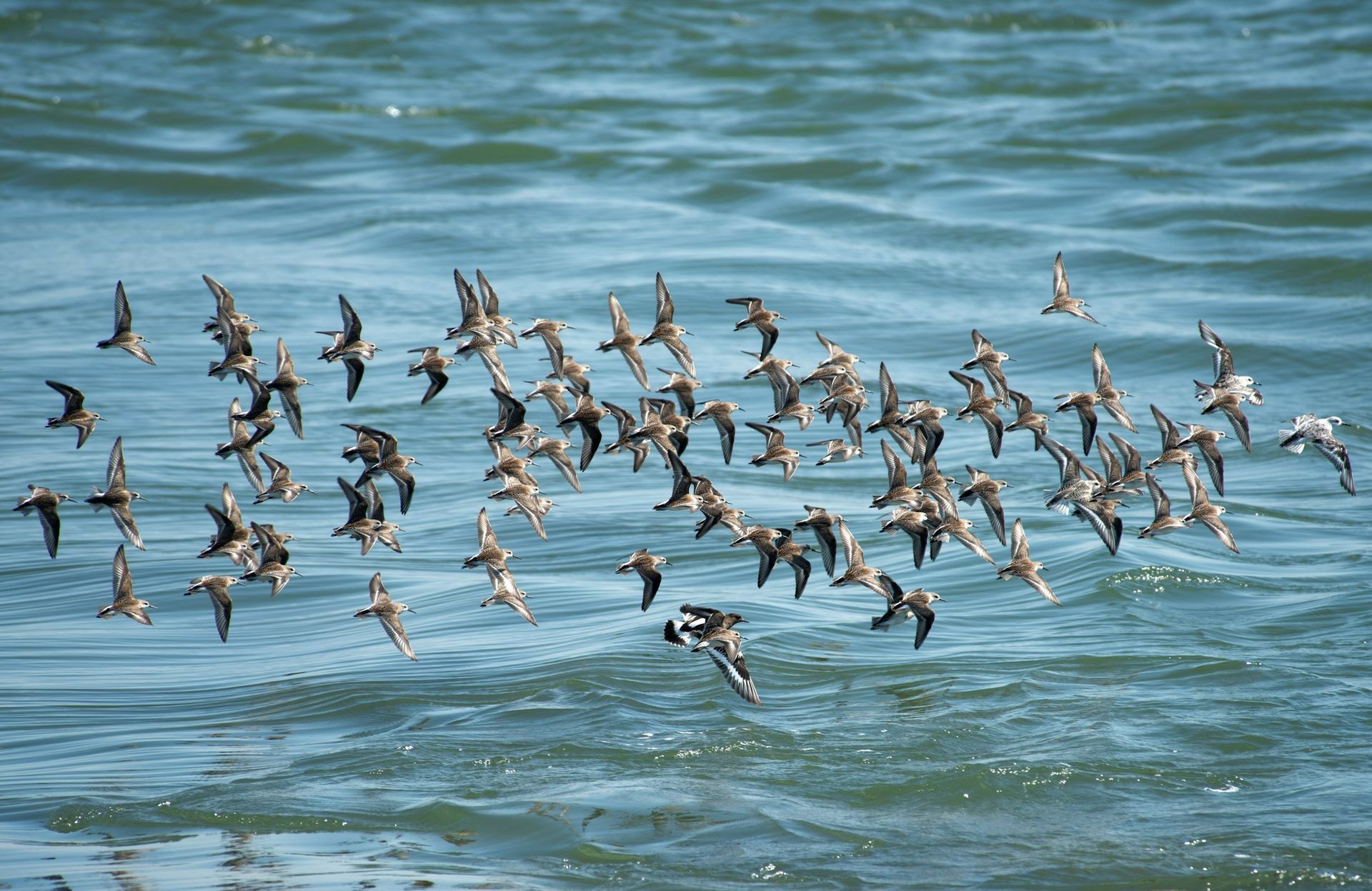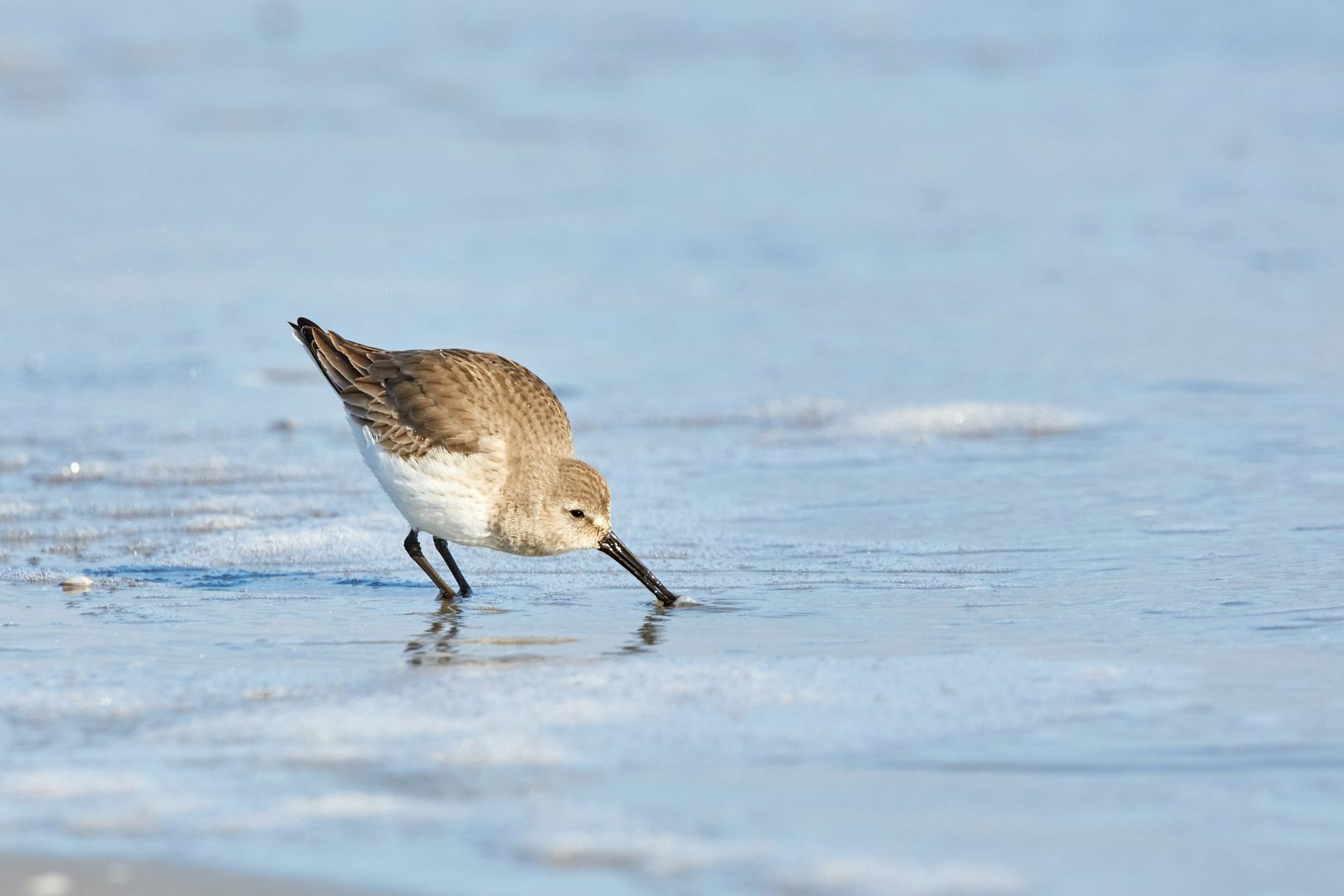Sandpipers are small to medium-sized shorebirds known for their slender bodies, long legs, and probing beaks, which they use to forage for invertebrates in mudflats and along shorelines. Found on nearly every continent, sandpipers are highly migratory and play an important role in coastal ecosystems by controlling insect and small crustacean populations.
Most sandpipers measure between 6-10 inches in length, with wingspans ranging from 12-18 inches. Their plumage is typically a mix of browns, grays, and whites, offering excellent camouflage in wetland habitats. Common species include the Western Sandpiper and Least Sandpiper.
Sandpipers are opportunistic foragers, feeding on insects, crustaceans, and mollusks. During the breeding season, they nest on the ground in open areas, with females laying 3-4 eggs per clutch. Both parents participate in raising the chicks, which are precocial and able to forage on their own shortly after hatching.
Natural predators of sandpipers include gulls, foxes, and larger birds of prey. Human-related threats such as habitat loss, pollution, and climate change pose significant risks to their populations. Despite these challenges, sandpipers remain common in many regions due to their adaptability.

For your safety and the well-being of wildlife, please observe animals from a distance and avoid touching or disturbing them. If you encounter an animal that appears injured or in distress, contact a licensed wildlife rescue organization for guidance before intervening.
Found An Animal? Not sure how to help a wild animal in need? Learn when to step in, who to call, and how to help safely.
Did You Know?
- Sandpipers are among the longest-distance migrants, with some species traveling over 10,000 miles between breeding and wintering grounds.
- The Least Sandpiper is the smallest shorebird in the world, weighing less than an ounce.
- Some sandpipers use a behavior called “foot-trembling” to stir up prey in mud or sand.
- During migration, sandpipers fly in tight flocks, often synchronizing their movements to evade predators.
- Sandpipers have highly sensitive bills that can detect prey through touch alone.
- Sandpipers can live up to 10 years in the wild.
- They often form mixed-species flocks with other shorebirds for added protection.
- Sandpipers are known for their soft, high-pitched calls, which help them stay in contact during migration.
- These shorebirds can fly up to 60 mph (96.5 kph) at their top speed.
- Sandpipers are known for wagging their tails in nervousness.
Problems Faced In The Wild
- Habitat Loss: Coastal development and wetland drainage reduce critical foraging and nesting areas.
- Pollution: Oil spills and chemical contaminants harm sandpipers and reduce prey availability.
- Climate Change: Rising sea levels and altered weather patterns affect migration and breeding success.
- Human Disturbance: Recreational activities on beaches can disrupt feeding and nesting.
- Predation: Eggs and chicks are vulnerable to predators such as gulls and foxes. Dogs can also chase and catch sandpipers.
- Invasive Species: Non-native predators and plants can disrupt sandpiper habitats.
Tips For Cohabitation
- Protect Wetlands: Support conservation efforts that preserve and restore natural shorelines.
- Reduce Beach Disturbance: Avoid approaching sandpipers or disturbing their feeding areas.
- Dispose of Waste Properly: Keep beaches clean to prevent pollution and protect prey populations.
- Participate in Citizen Science: Help monitor sandpiper populations and report sightings.
- Limit Use of Pesticides: Protect the insects and small invertebrates that sandpipers rely on.
- Educate Others: Share the importance of shorebirds in maintaining healthy coastal ecosystems.



